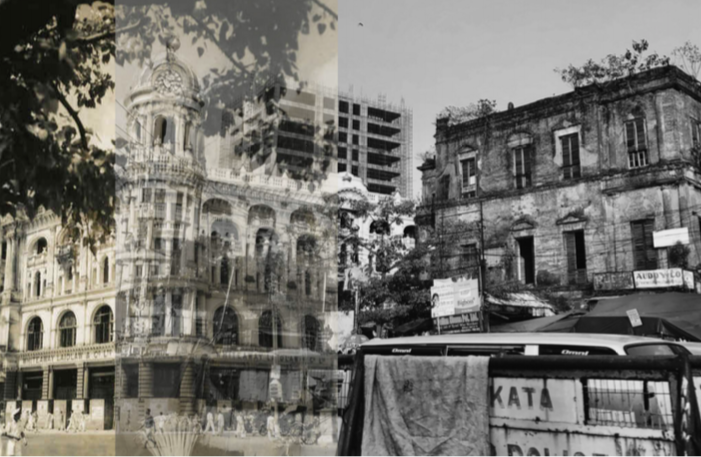
A [Post]Colonial /Calcutta/
A master’s thesis built upon an investigation of power, preservation and loss in Kolkata.

On August 15, 1947, India gained independence from British colonial rule. While this was widely welcomed across the Indian subcontinent, because it bestowed new levels of political autonomy and provided opportunities for redefining an Indian national culture and identity, it created a sense of conflicted nationalism amongst the people of Calcutta; and specifically, the Bengali Bhadralok or elite class. Although the residents of Calcutta desired freedom as much as the rest of India and spearheaded the independence struggle, anti-western sentiment that accompanied the switch to the postcolonial challenged their perception of their own heritage. Calcutta had, for more than two centuries, benefitted from being the second city of the British Empire, after only London. This made it the urban epicenter for the concentration and dissemination of Western culture and expressions of power and place in the East. As such, British rule directly reconfigured space and society in Calcutta.
As a colonial capital, the city enjoyed a level of economic prosperity, political power and cultural clout which fostered a sense of entitlement amongst the elite that thrived under such urban conditions and methods of governance. For more than 200 years, Bengali Bhadralok cherished the dominant imaginary that privileged their city and its populations precisely because of colonial rule. However, the relocation of the British imperial center to Delhi in 1911, which occurred in response to Bengali resistance to the colonial attempt at partitioning the state along the lines of religion, challenged their standing. In this thesis, I investigate how and why the Bengali Bhadralok utilize historic preservation to assure the global recognition of their elite status and Calcutta’s colonial past. I’ve chosen this lens of analysis because the institution of preservation authorizes the Bengali Bhadralok to perpetuate the conceptions of value and narratives of power that originated during the British colonial project and gifted them their standing. My thesis reveals the legacies of loss and conflicted nationalism that shape Calcutta’s Bengali, elite socio-spatial identity. Through my work I observed a Bengali Bhadralok paradoxical imaginary — one driven by the simultaneous protection of the city’s colonially entangled urban condition and embrace of both the nation’s postcolonial status and global aspirations.
TABLE OF CONTENTS
INTRODUCTION
CHAPTER I. RHETORIC + REASONING
1. Literature Review
2. Defining Key Terms
CHAPTER II. POWER IN/AND PRESERVATION
1. Institutionalizing Preservation
2. The Bhadralok Built Environment
3. Reading Colonial Residue
4. Problematizing Preservation
CHAPTER III. TOURISM & THE STAGNANT GAZE
CHAPTER V. CURATING A COLONIAL IMAGINARY
1. Curating a Colony
2. Mapping Empire
CHAPTER V. UNDERSTANDING LOSS
1. The Rise
2. The Fall
3. Legacies of Loss
CONCLUSION: THE [POST]COLONIAL CONDITION
